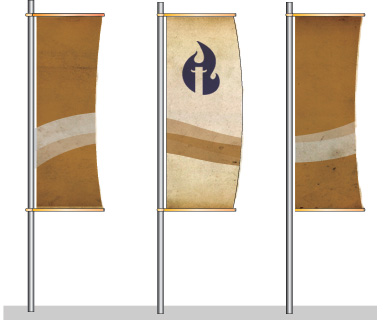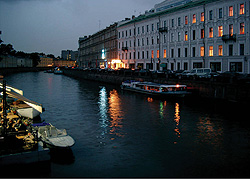A. Challenges
 Saint Petersburg's biggest challenge lies in finding a single, bold identity. In over three hundred years of existence, the city has faced numerous renamings, revolutions, governments and leaders. With so many changes, Saint Petersburg has struggled to present itself coherently to the world.
Saint Petersburg's biggest challenge lies in finding a single, bold identity. In over three hundred years of existence, the city has faced numerous renamings, revolutions, governments and leaders. With so many changes, Saint Petersburg has struggled to present itself coherently to the world.
Poverty and unemployment have hurt the morale of Saint Petersburg's citizens. A distinct middle class is emerging, but the transition from communism to capitalism has not been an easy one. Often times several families will share common areas in a building, like kitchens or bathrooms. The city is home to roughly five million people, a number that has stayed relatively static in the past few decades. This is due to a declining birth rate in Russia's urban areas and a lower mortality rate due to poor health standards.
Fortunately, the resources are already in place for a new identity. There are great architectural triumphs such as the Winter Palace, unparalleled art such as Dostoevsky's writings and Tchaikovsky's music, and natural beauty inherent in the Neva River and the white nights. As the northernmost major city on earth, Saint Petersburg is placed in a unique location; it remains close to the major cities of both Russia and Europe.
B. History
When addressed with the complex problem of creating a new visual identity system for Saint Petersburg, the history was not ignored. Part of what makes the city special is its time-tested ability to survive and adapt no matter what the circumstances. Strength, therefore, was championed as one of the major aesthetic values. Strength has always been a word associated with Russia as a whole, but it seems to fit Saint Petersburg in a distinct way.

Strength is shown in several ways throughout the city branding, including bold colors and vertical designs that emulate a column. This idea carries across in banners, the trademark, layouts and more. The city is relatively flat, lacking the towering skyscrapers found in many modern cities. Yet since Saint Petersburg is Russia's window to the world, the vertical designs can also symbolize a lighthouse or beacon. At a tertiary level, the vertical arrangements represent a rising cultural advancement rooted in the city's history.
The color palette was selected after looking at hundreds of photographs of Saint Petersburg and selecting several recurring colors. The most prominent of these was a dark gold color, usually seen mixed with a stone texture, reminiscent of the hundreds of city buildings and statues that continue to stand the test of time. The actual gold color is based off a statue known as "The Angel" that sits atop a spire in the Peter and Paul Cathedral. Because it sits at the highest point in downtown Saint Petersburg, the symbolic angel is seen as a guardian overseeing and protecting the city. This yellow/brown color, combined with stone textures and column-based designs, was selected to symbolize the attributes of strength and history.
C. Culture
 Another key attribute lies in the Neva River, which splits Saint Petersburg into four regions. It is one of the city's most beloved icons, appearing in countless pieces of Russian literature and art. Saint Petersburg is sometimes called the "Venice of the north" because of the way the Neva slices through the city. It is another important element that unifies the city, which fits into the search for a singular identity rather nicely. The river is represented by a series of curves. This contrasts the rigidity of the elements used to represent the city's strength and gives designers several visual elements to work with. These curves were also chosen to serve as an identity for the city's artistic culture. Brushstrokes, plucked cello strings, ballet steps: the curve embodies this graceful, free-flowing motion found in Saint Petersburg's diverse art forms. It establishes a welcoming, friendly tone and implies kinetic movement.
Another key attribute lies in the Neva River, which splits Saint Petersburg into four regions. It is one of the city's most beloved icons, appearing in countless pieces of Russian literature and art. Saint Petersburg is sometimes called the "Venice of the north" because of the way the Neva slices through the city. It is another important element that unifies the city, which fits into the search for a singular identity rather nicely. The river is represented by a series of curves. This contrasts the rigidity of the elements used to represent the city's strength and gives designers several visual elements to work with. These curves were also chosen to serve as an identity for the city's artistic culture. Brushstrokes, plucked cello strings, ballet steps: the curve embodies this graceful, free-flowing motion found in Saint Petersburg's diverse art forms. It establishes a welcoming, friendly tone and implies kinetic movement.
The harmony established between the unflinching, dedicated strength and fluid, progressive culture creates a well-rounded identity for Saint Petersburg. This helps distinguish it from other Russian cities like Moscow, which is seen today more as a political center.
D. External Links
Saint Petersburg Guide: This travel guide is the single best Saint Petersburg online resource.
Saint Petersburg Times: Updated daily; helpful for current news events.
State Hermitage Museum: Official museum site.